V October 19, 2019
Up early, we joined our collectivo (a minivan or bus that collects patrons until the vehicle is full) who then brought us to our Peruhop bus.
We settled in for the 5 hour drive that would bring us through the Peru/ Bolivian boarder.
We managed the boarder without incident. Our bus dropped us off at boarder control where we received our exit stamp, walked the 10 minute stretch into Bolivia where we received our entry stamp and boarded a mini van that brought us to Copacabana, 20 minutes away.
We found our hostel and squirrelled away the afternoon wandering Copacabana’s few streets until there was nothing left for us to do but head home for the night.
Early the next day we caught a boat ride to Isla de Sol where we spent a couple of hours independently hiking up and around the island. It was an excellent way to burn off a few hours until we met the bus that would bring us into La Paz later in the evening.
With no motorized traffic, Isla del Sol’s main sites can only be accessed on foot via a network of rocky trails leading from one side of the island to the other.
According to Incan lore, Isla del Sol (Island of the Sun) is both the birthplace of their revered Sun God and the world’s first two Incas.
Story has it that following a great flood, the province of Lake Titicaca was plunged into a long period of darkness. After many days, the bearded god Viracocha arose from the depths of Lake Titicaca, traveling to Isla del Sol where he not only commanded the sun to rise, but created the world’s first two Incas; Manco Capac and Mama Ocllo (the Adam and Eve of the Andes).
While the story is indeed dramatic, it’s fair to say that the Incas didn’t actually originate on the shores of Lake Titicaca.
A more realistic version is that in the mid fifteenth century the Incas invaded the island – wresting control from the rulers of the time – and created the story in an attempt to justify their reign.
Either way, we had a great time exploring Isla de Sol with one of the highlights, seeing donkey’s traverse the island carrying goods from boats up the island’s steep hills to hospedajas (homestays on the island).
It wasn’t long before we found ourselves skipping across the water and back to the shores of Copacabana where we met our Boliviahop bus. We threw our bags onboard and settled in for a couple of hours until we found ourselves on a remote shoreline and were informed we would have to disembark.
At this point, the busses transferred to two small wooden barges, powered by outboard motors that ferried the busses across the small channel. Passengers were herded onto two small boats with rickety wooden canopies. No safety briefings were given and there wasn’t a life jacket in sight.
A tiny little girl sat on a milk crate in front of an outboard motor. Huddled under a blanket, she kept warm against the cold night air as her father steamed us across the short channel; not a single navigational light to announce our passage. It was pitch black outside. I was mesmerized that this makeshift crossing was an official passage for our Boliviahop bus!
Bewildered, we tramped through the rain and mud on the other side, boarded our bus again and settled in one last time, arriving in La Paz two hours later around 11 pm.
We were the last of the passengers to get off the bus and our Perhop guide walked us straight to our hotel. The staff were upbeat and checked us in , showed us to our room and offered to have the kitchen whip up some grilled sandwiches. We hadn’t eaten all day and so we took them up on their very kind offer!
By 12am, we hit the bunk exhausted, but eager to see what La Paz had in store for us tomorrow!

 Copacabana, Puno, Bolivia
Copacabana, Puno, Bolivia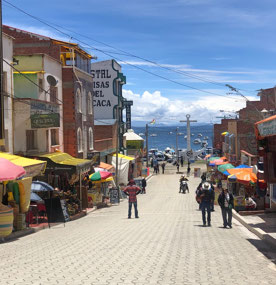
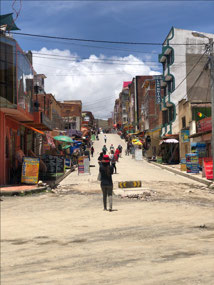




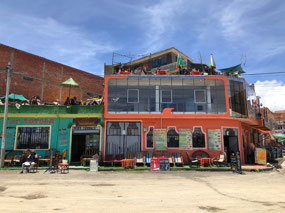
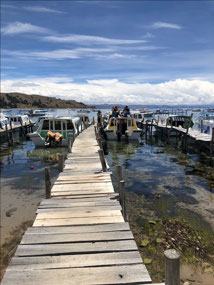
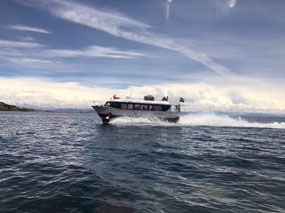
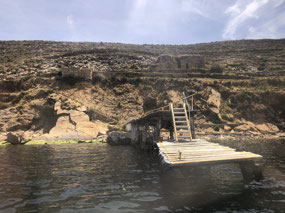
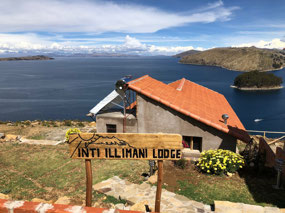
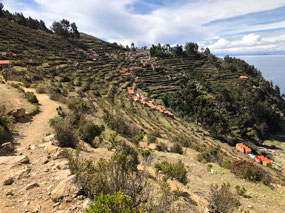
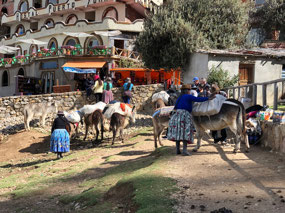
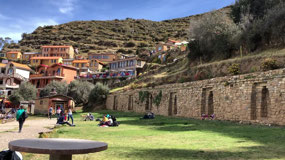
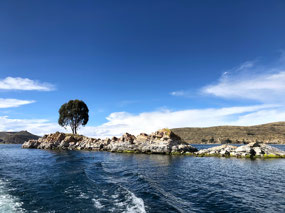
Aunt Madeline
2019-10-29
I think ..I'd would be all bush out by now! Ha I'm amazing at the beautiful colors of the local garments. Bright and vibrant..lovely
Lee Anne
2019-10-30
Awesome!
Aunt Theresa and Uncle John
2019-10-31
What an AMAZING journey told through vibrant words and photos! Love it!❤️